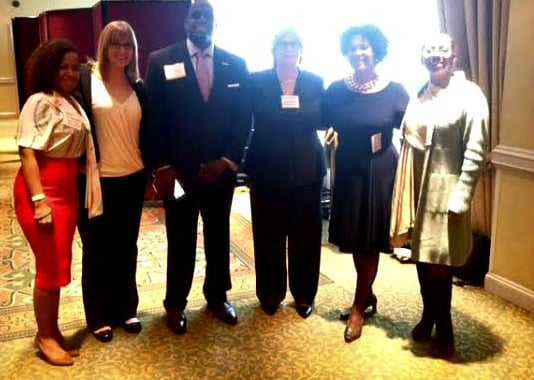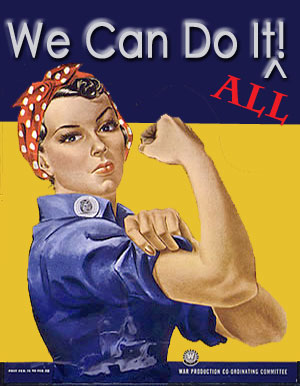Keys To Creating Discussions about Women's Equality & Campus Diversity

It started with the revelation that Harvey Weinstein was using his power and influence to sexually harass woman and the whole House of Cards folded when actor Kevin Spacey and comedian Louis C.K. admitted to sexual harassment and other impropriety. Accusers have come forward in numbers too many to count and the #MeToo hashtag has empowered women (and men) across the globe to speak up and out against the rich and powerful that have used their positions as a license for inappropriate behavior.
While the fight woman's rights isn't a new one, the groundswell reached a tipping point with Donald Trump's Access Hollywood tape first leaked and later reached a fever pitch with the Woman's March after his inauguration in January. What was historically a tempered discussion about suffrage, and more recently abortion has become the premier international topic of conversation centered around diversity. Women across the globe have been speaking out against inequality ranging from equal pay to sexual harassment. These concerns aren't unique to celebrity however and college campuses have become ground zero for all parties to share an opinion. Although our institutions of higher learning should be fertile ground for all healthy discussion, much like our National discourse, lines have been drawn and sides have been dug in on their positions resulting in tempers flaring into conflict. Issues from safety to liability exposure and 1st Amendment rights are all variables to be accounted for. Here are four keys to hosting healthy discussions about Women's Equality and campus diversity at your school.
Set the Groundrules
While many students won't understand why certain activities are disallowed, it's important to outline them clearly. Because most American colleges and universities and their foundations are or not-for-profit, entities they must follow strict rules and regulations. For instance, they may not formally endorse any issue or candidate. The Internal Revenue Service (IRS) states that these institutions “may not participate in, or intervene in…any political campaign on behalf of (or in opposition to) any candidate for public office.” Outline these restrictions clearly so when student groups are told an activity is in restricted, they understand it is because it violates a regulation, not because you're suppressing their rights.
Whether Its Safe or Brave, Identify and Designate a Space
As colleges and universities around the country continue to be leaders in the diversity of thought, there has become a growing sensitivity to Brave and Safe Spaces. Safe Spaces are those that allow students to feel safe to belong and be comfortable in who they are without judgment based on gender, orientation or religion. Conversely, Brave Spaces allow for open discourse about important topics that affect the world around us. While they sound similar, they can be contradictory. For instance, students that feel unaccepted may be threatened by open debate about their very existence.
It's important to consider the culture of your campus and be cognizant of the needs of the student body. Clearly, identifying the geography where spaces exist and the times and ground rules to which they are to be used. It's even a good idea to draw physical lines. Be sensitive to all the viewpoints on the campus and be open to suggestions and change. Because diversity requires collaborative input, you may experience blindspots in your own judgment when designating space that students will enlighten you to. Be receptive and willing to accommodate within reason. Identify an arbitrator who students can bring concerns to in hopes of providing resolutions that are culturally sensitive.
Celebrate Diversity
As we've seen with the #metoo movement, what is on the surface, rarely is indicative of what true motivations are. Harvey Weinstein has often been celebrated as a champion of diversity and major backer of progressive politics. While money is important, to truly celebrate differences, institutions must prescribe a systemic commitment to it. If you're still abiding by the thinking that Asian night in the cafeteria is going to do the trick, then this message is for you.
Celebrating diversity means not only being welcoming of a multicultural student body, but an equally diverse faculty, and most especially, college leadership. It means recognizing the need to have an expansive curriculum that reflects the growing needs of the student populous beyond the traditional core requirements. It means providing an equal platform to the voiceless and creating an environment that is devoid of preferential treatment and disparity of any kind.
This can be a particularly challenging thing, especially for older institutions without a history of such. The old way of doing things, while easier, may no longer be acceptable. Its important in these times to regularly conduct self-evaluations of your efforts to be inclusive and celebratory of differences. Be transparent with the results and communicate a commitment to eliminating any disparities.
Embrace Diversity in Your Marketing
The easiest way to welcome diversity is to ask for it. Very often, institutions of higher learning are married to the ways of the past, steeped in generations of tradition. While this is a great thing, it's also important to recognize that you are an institute that is advancing with times and markets it as such. Consider messaging that, not only features diverse students, but speaks to their unique challenges. Highlight student differences and consider segmented messaging that targets specific cultural groups. Be sure to highlight any improvements the campus has made to assist in making the environment a safe one and combative of cultural bias and sexual assault. Consider partnerships with the surrounding community to assist in creating a welcoming environment for students, faculty, and staff of all kinds.
We are now at least a generation removed from the times when the academic curriculum was the basis upon which all college decisions are made. It's important to realize that cultural sensitivity is a major factor as well. By moving towards a more inclusive environment we as institutions of higher learning can begin to be the change in issues of Woman's rights, equality and diversity that we hope to see and as evidenced by recent events, needs to happen.
Share this
You May Also Like
These Related Stories
Trade Brooklyn: Women in Media and Marketing [Highlights]


Trade Brooklyn: Women in Media and Marketing [Highlights]
April 05, 2014
5
min read
Feminism 2.0


Feminism 2.0
April 23, 2013
6
min read
Diversity Infusion: 6 Tools For a More Diverse College Campus


Diversity Infusion: 6 Tools For a More Diverse College Campus
November 21, 2017
4
min read


